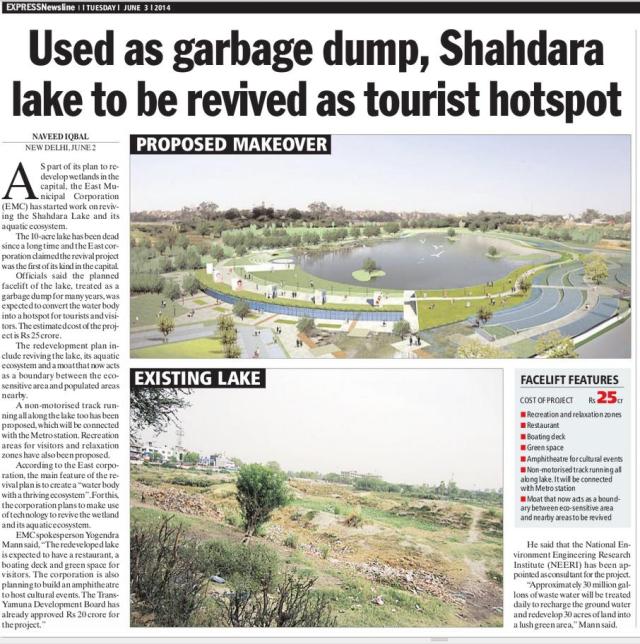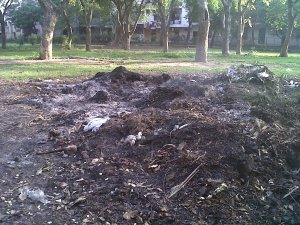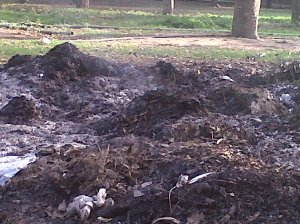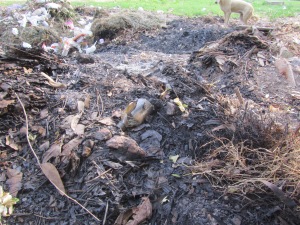Delhi may drown in its own waste
Growing by heaps and mounds, Delhi’s garbage crisis may soon reach its breaking point.
Three of the four stinking waste mountains (landfills) are long overdue for closure and there are no fresh landfills available to take in the current daily discard of 9,000 tonnes. By 2020, the Capital needs an additional area of 28 sqkm, more than the entire spread of Lutyen’s Bungalow Zone, to dump 15,000 tonnes of garbage daily.

Since as much as 85% of the city doesn’t have a formal door-to-door trash pick-up system, the emerging scenario is both worrisome and scary. The 2,500-odd filthy community bins (dhalaos) that serve as secondary collection centres for the three municipal bodies in thousands of colonies will start overflowing, and garbage will spill on to the streets. Residents will have no option but to start throwing waste out, making Delhi drown in its own discard.
The situation may soon go the Bangalore way, where the waste management system has collapsed and the entire city turned into a garbage heap last year when villagers blocked the way to the lone landfill because of environmental concerns.
Same mistakes have been committed here also. People in Delhi are also bitterly opposed to new landfills coming up in their neighbourhood as they have seen the authorities did not maintain the past ones scientifically, turning them into massive, polluting heaps. The black thick liquid, leachate, created when rainwater filters down through the landfill, has made the soil highly toxic. Rainwater runoff goes into surface water drains while methane poisons the air.
Despite court intervention, the government and civic agencies have failed to find a way forward. The civic bodies have now told the Delhi high court that “since there’s no other option, we have been forced to put human life and property at risk”.

Delhi’s non-dumping options to manage waste have also shrunk drastically. Burning waste no longer seems viable because of environmental concerns and poor segregation of waste. Compost plants are not doing well because manure doesn’t sell, and again becomes garbage.
As much as 50% of the waste is fit for composting. About 30 per cent of it can be recycled. Effective segregation at source, in transit and during disposal, will mean only 20 per cent of the refuse is needed to be sent to the landfill site. This will also mean a cleaner city with fewer dhalaos, garbage trucks and longer lifespan for landfills. But instead of proper segregation, only random picking continues.
Either private sweepers, who snap up the most sought-after refuse, or residents themselves take waste to dhalaos. There, rag-pickers slog through the muck to hunt for recyclable materials.
When waste is taken from dhalaos to landfills, another set of trash-pickers collect what their street counterparts miss, completing a cycle of “illegal” segregation.
Civic bodies blame residents for not segregating waste but what’s the point when everything will eventually be mixed-up? Segregation by residents will only work when the corporations have a complete door-to-door waste collection system and trash pickups have separate containers for dry and wet waste.
Delhi has miserably failed to manage its waste load. Only 15 per cent of R1,350 crore that the three corporations spend on waste management and sanitation is spent on actual disposal. The rest goes into collection and transportation.
The authorities must ensure segregation and promote composting and recycling. They must quantify waste generation for setting effective reduction targets. But don’t wait for the authorities to do everything. From segregation, recycling to composting — you can make a difference. And, yes, consume and waste less. Now is the time.
‘De-centralising management of waste is need of the hour’
Interview: Bharati Chaturvedi
Bharati Chaturvedi of Chintan Group has been working with volunteers to help solve Delhi’s waste management problems. She is running collection and recycling projects at four railway stations and several colonies in the Capital. She spoke to HT on how Delhi can manage its waste better.
Where have we gone wrong?

There are no reduction targets. We are investing in waste-to-energy plants that need dry waste, such as plastics, paper and cardboard. But what about 6,000 tonnes of wet waste that Delhi spews out every day? Taking waste all the way to centralised facilities is a blunder.
What’s the way out?
Wet waste can be easily composted, or turned into bio-gas. To do this, we don’t need large compost plants, but more and smaller ones at the municipal ward level. Those who can must start small composting units at home. People must start reducing packaging. There can be no change without reducing consumption.
What should the government do to promote composting?
The Delhi government should buy back a minimum quantity of compost made of waste at pre-decided rates from RWAs, colonies or NGOs or even companies. This should be in lieu of the compost MCD’s horticulture departments buy from the market.
How can we make recycling more effective?
We must have to upgrade the working conditions of rag-pickers, kabariwalas who recycle nearly 20% of the waste. They have not been given any space to sort out and store waste. They should also be given training and help for occupational safety.
Comparisons
Exemplary Surat

In the 1980s, a population boom and urbanisation in Surat spelled growth of slums, piles of garbage and overflowing drains.
A plague outbreak hit this Gujarat city in 1994. The world saw the havoc a city’s failure to manage solid waste could wreak.
But soon the city changed gears and became one of the cleanest cities in the country. Behind the transformation, there was planning.
Residents cooperated through reduction, reuse and recycling. Institutional changes took place, too. Waste management was decentralised, grievance redressal was made effective. Littering meant fines. And all this has sustained.
The civic body has engaged private sweepers for penetration. Contractors are actively involved in transport, collection, and disposal of waste.
Bangalore’s mess
Bangalore, which generates 4,000 tonnes of solid waste a day, has still not recovered from a major garbage crisis that gripped the city in September last year. Villagers blocked the way to the landfill to protest dumping of untreated waste, turning the city of gardens into a garbage dump. The civic body has made it mandatory for residents to segregate garbage at source. But garbage collectors still aggregate waste. Now a processing unit each is being planned for all assembly segments.
Global trends
In 2004, China became the world’s top waste producer, toppling the US. China will now have to spend eight times more on waste disposal by 2020 and require 1,400 new landfills.
Source: Hindustan Times
Delhi may drown in its own trash (Mail Today)
STARING at an acute waste disposal crisis, the South Delhi Municipal Corporation ( SDMC) sanitation department is letting garbage dhalaos to pile up in order to avoid dumping it at landfill which is already overflowing with the existing waste.
The urban eyesore is not confined to posh South Delhi colonies; it’s a pan- Delhi reality triggering Capital’s urban picture littered with stinking filth not lifted for weeks together. At some places, the pileup only gives an excuse to local residents to turn that spot into a make- shift dhalao.
While in 2007- 2008, the Capital produced a total of 5,500 metric tonnes of garbage waste.
But in six years, it has almost doubled and stands at 9,200 metric tonnes.
The population of the Capital has grown 40 lakhs in the last decade, which in turn, has increased the amount of garbage. However, the civic bodies haven’t added any new infrastructure or identify new landfills. “ It is not that the sanitation services are lackadaisical, but where do we dump the garbage finally? All three landfills – Ghazipur, Okhla and Balsawa are already overflowing with waste. Moreover, the budget doesn’t allow the civic bodies to add new infrastructure like waste trucks, etc,” admitted an SDMC official.
Shifting the blame to the DDA, the NDMC sanitation officials said that the corporation has identified a number of sites to be used as landfills, but the land owning agency has not allotted any land for the same as yet.
Almost 85 per cent of the city doesn’t have a formal door- todoor trash- pickup system, leading to 2,500- odd unhealthy dhalaos ( waste dumping enclosures) serving as secondary collection centres.
Mail Today on Tuesday visited the posh colonies of South and West Delhi only to find heaps of garbage on streets, foul smell and overflowing dhaloas all over SDMC’s jurisdiction.
Not only does this make the localities uninhabitable, but the foul smell can be quite hazardous for your health. Sandeep Sharma, a resident of Vasant Vihar, who takes the Nelson Mandela Road in Vasant Vihar daily, said: “ I drive through this road every day for the past 15 years and I haven’t seen this place clean even a single day. It’s shameful.” If the sanitation situation at Vasant Vihar is bad, it is much worse when the team travelled towards the Southeast colonies of Delhi like Kalkaji, Chittaranjan Park, Malviya Nagar, Green Park and New Friends Colony.
Residents of New Friends Colony alleged that since the Lok Sabha Election Day, some of the dhaloas haven’t been cleaned and is now over- flowing with over two weeks of garbage lying on the nearby streets. The situation in the posh colonies of West Delhi is no different.

















